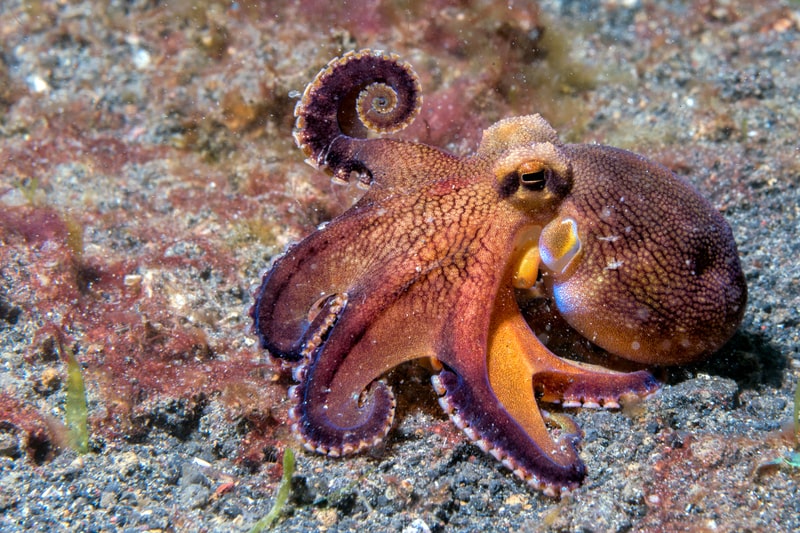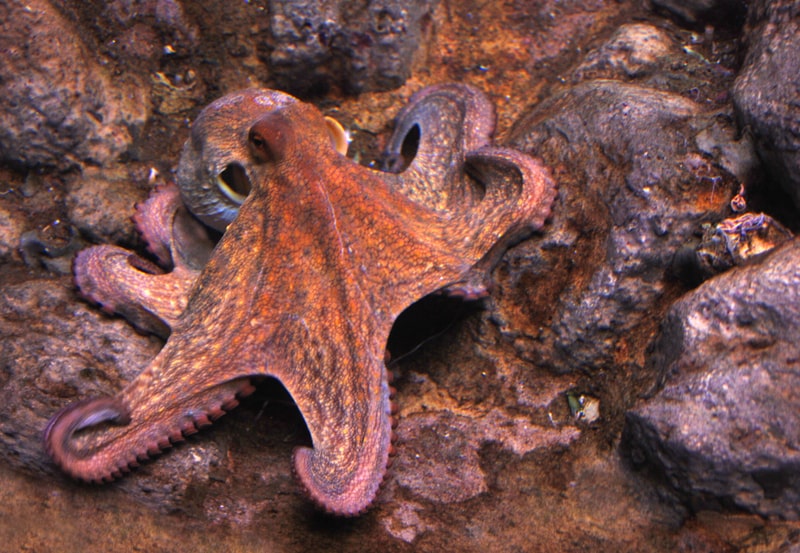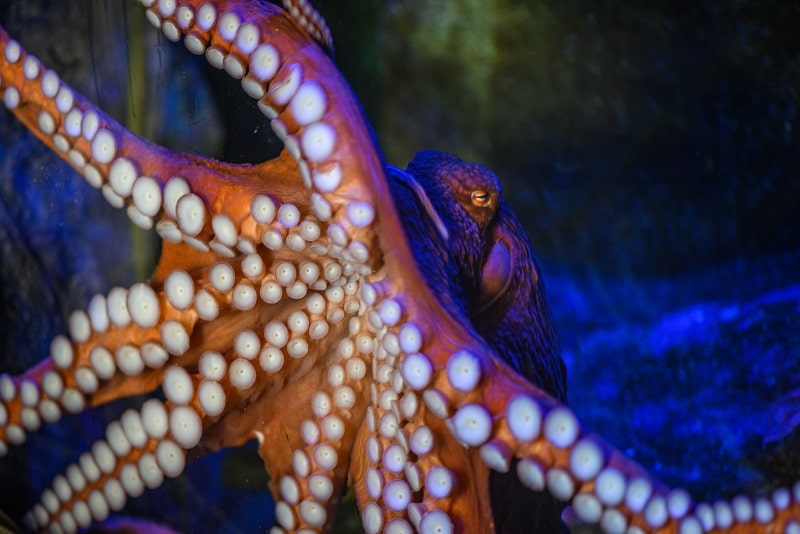Last updated on May 30th, 2023
38. Acknowledging their intelligence, several countries require experimental surgery on octopuses to use anesthesia. This protection usually extends only to vertebrates. In the UK, the Animals Scientific Procedures Act covers all cephalopods.
Like or dislike
39. In laboratories, an octopus can recognize its human keepers and behave differently with each of them. It may squirt water onto persons it dislikes or new people in the lab.
Friendship
40. A human and an octopus can be friends. A 2020 Netflix documentary explores the unusual bond forged in a South African kelp forest. She taught him how she lived, ate, slept, and survived shark attacks. My Octopus Teacher won Best Documentary Feature at the Oscars.

Inspiring robotics
41. In Germany, the automation company Festo built a soft robotic gripper inspired by octopus arms. The silicone appendage has two rows of suction cups. It moves using pneumatics for a tight grip and fast action in industrial applications.
42. Taking biomimicry further, Italian engineers from Pisa developed a full-bodied robotic octopus. It can crawl, swim, and grab like the real thing. It uses shape-memory alloy wires turned into springs as muscles. Contraction occurs when heated by an electric current. This robot can help explore dangerous environments.
43. In the US, researchers from the University of Pennsylvania and Cornell created prototypes of artificial octopus skin. They used flexible silicone embedded with fiber-mesh frames with tiny concentric circles. Inflating different sections creates the desired texture. This artificial skin has various camouflage applications, like covering equipment to help biologists study animals closer.
44. A Harvard team of engineers developed the first soft, autonomous, and wireless octo-bot. The 3D-printed silicone body moves using pneumatic power, converting liquid hydrogen peroxide into gas to inflate the limbs. In the future, doctors may deploy soft robot capsules with biodegradable materials for less invasive endoscopies.

45. Scientists found the automatic reproduction kill switch. It is in the octopus optic gland between their eyes, comparable to the human pituitary gland. Removing this stopped the sacrificial behavior in mothers. Females abandon their eggs to feed. They grow bigger and live longer.
46. Octopuses edit the RNA in over half their genes, while humans only cover less than 1%. It helps them adapt rapidly to temperature changes in their environment. It may also hold the key to their impressive intelligence. However, this strategy came at the cost of a slow evolution.
A nine-armed octopus
47. In 2020, a Japanese seaweed farmer discovered a nine-armed octopus with an extra limb branching off the middle of one arm. Specimens with 36 and 96 arms also emerged in Nagasaki and Matoya Bay.
In captivity they may
48. Captive octopuses may cannibalize each other, hence the need for individual aquariums. They might also turn to autophagy when stressed, biting off their arms but not always eating these. An unknown infection may induce self-amputation.

Powerful suction
49. Octopus suckers are powerful. A large one can hold up to 35 lbs, and each arm can have hundreds of these. The top cavity and flexible sides induce pressure and form a seal. Tiny concentric grooves help them stick to uneven surfaces underwater.
50. The Sea Change Project aims to protect the kelp forest off Cape Town – the filming site of My Octopus Teacher. The rising sea temperature is threatening its existence. Now called The Great African Sea Forest, the movement hopes to drum up more support for its conservation.
